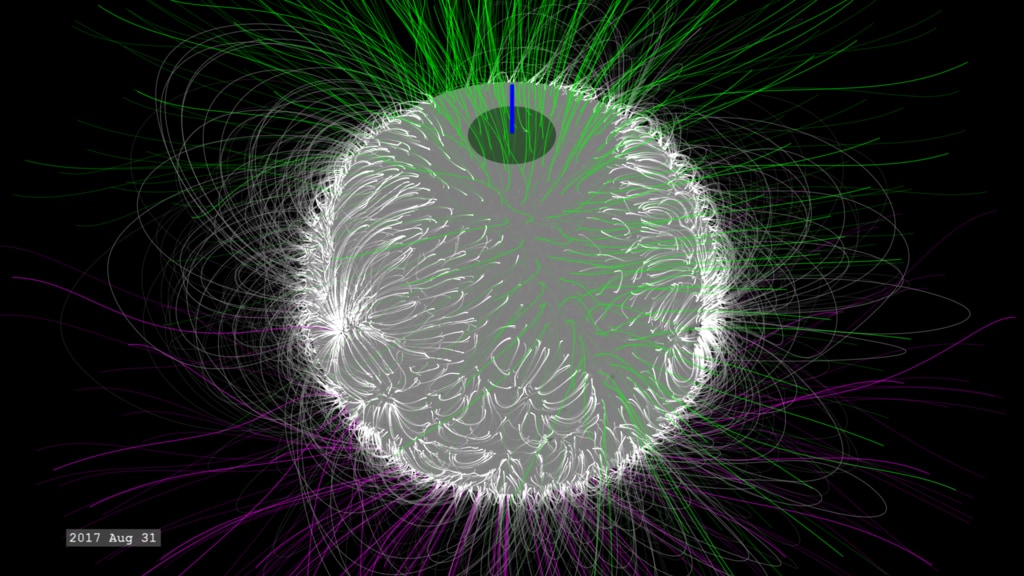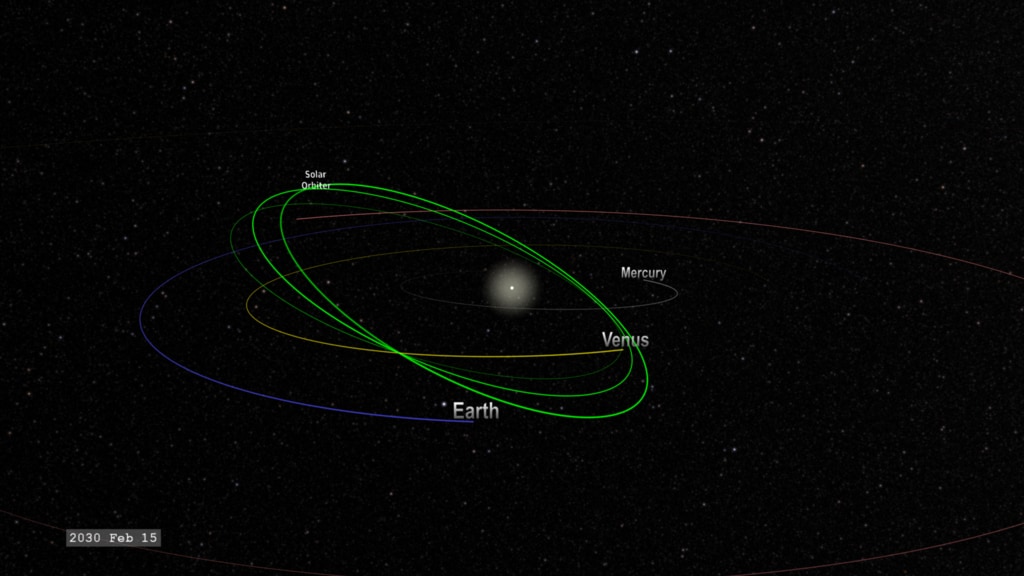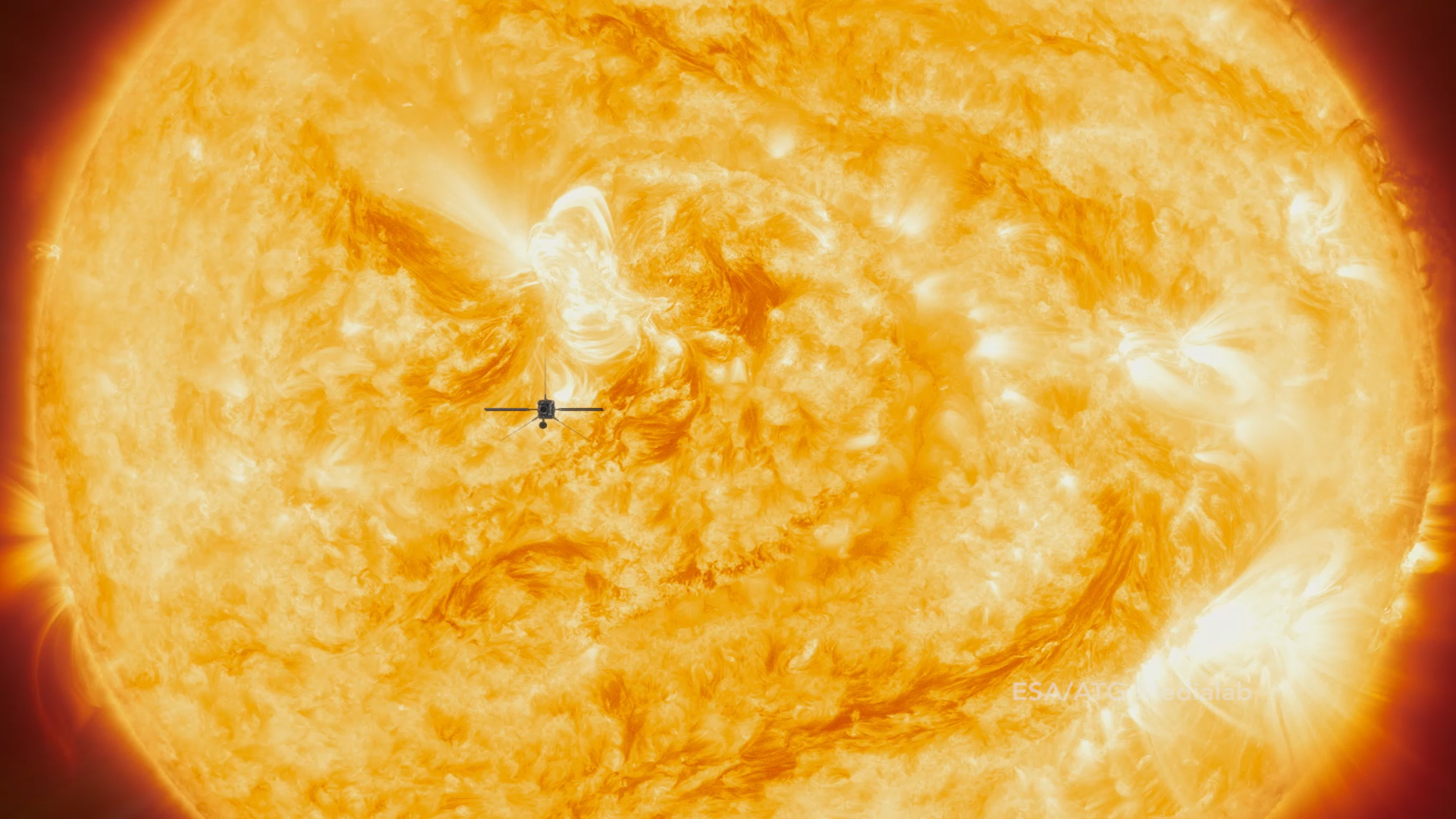Solar Orbiter Science Press Briefing
NASA and the European Space Agency (ESA) will present Solar Orbiter, the ESA/NASA mission to the Sun, during a science press briefing on Friday, Feb. 7. 2020, at 2.30 p.m. EST.
Solar Orbiter will observe the Sun with high spatial resolution telescopes and capture observations in the environment directly surrounding the spacecraft to create a one-of-a-kind picture of how the Sun can affect the space environment throughout our solar system. The spacecraft also will provide the first-ever images of the Sun’s poles and the never-before-observed magnetic environment there, which helps drive the Sun’s 11-year solar cycle and its periodic outpouring of solar storms.
The teleconference audio will stream live at:
https://www.nasa.gov/live
Participants include:
European Space Agency
• Daniel Müller, Solar Orbiter Project Scientist
• Günther Hasinger, Director of Science
NASA
• Nicky Fox, Heliophysics Division Director, NASA HQ
• Thomas Zurbuchen, Associate Administrator for the Science Mission Directorate, NASA HQ
During its closest approaches of the Sun, Solar Orbiter will travel fast enough to study how magnetically active regions evolve for up to four weeks at a time. Solar Orbiter will return the first images and measurements of the Sun’s polar magnetic field, helping scientists relate the poles to the solar activity cycle.
Credit: ESA/ATG Medialab
Solar Orbiter orbiting the Sun. Over its seven-year mission, the spacecraft will go as close as 26 million miles from the Sun.
Credit: NASA's Goddard Space Flight Center/Conceptual Image Lab/
Adriana Manrique Gutierrez
This animation of Solar Orbiter and its instruments begins by showing small sliding doors in the heat shield open to allow the internally mounted, remote-sensing instruments to observe the Sun. Special windows block out heat to protect the instruments during operations. The doors are closed when the remote-sensing instruments are not observing. The in situ instruments are in science mode throughout the spacecraft’s orbit.
Credit: ESA/ATG Medialab
Animation of the solar wind, the stream of charged particles that constantly blows from the Sun. Solar activity shapes space throughout the solar system, and has profound effects on our home planet.
Credit: NASA's Goddard Space Flight Center
Animation of a spacecraft experience damage from space weather. Sometimes, solar eruptions can disrupt satellites and everyday technology such as GPS and radio. At worst, space weather can also impact astronauts.
Credit: NASA’s Goddard Space Flight Center/Conceptual Image Lab/Krystofer Kim
A solar eruption bursts from the Sun, as seen by NASA’s Solar Dynamics Observatory.
Credit: NASA's Goddard Space Flight Center/SDO
This visualization presents a model of the Sun’s magnetic field based on solar observations. Currently, scientists lack measurements of the magnetic field at the Sun’s north and south poles. Solar Orbiter will fly in an inclined orbit in order to study the poles.
Credit: NASA's Scientific Visualization Studio/Tom Bridgman
Animation showing the deployment of the boom and antennas. Solar Orbiter carries a comprehensive suite of 10 instruments that take both in situ and remote measurements.
Credit: ESA/ATG Medialab
Animation of a coronal mass ejection impacting Mars, Earth, and Jupiter. Solar Orbiter is equipped to image such eruptions as they burst from the Sun, and measure the eruption directly as it passes the spacecraft.
Credit: NASA’s Goddard Space Flight Center/Conceptual Image Lab/Bailee DesRocher

Image of NASA’s heliophysics observatory fleet.
Credit: NASA

Image of the European Space Agency’s solar system explorers.
Credit: ESA
Animation of the Artemis program’s lunar lander concept.
Credit: NASA
For More Information
Credits
Please give credit for this item to:
NASA's Goddard Space Flight Center
-
Producers
- Joy Ng (USRA)
- Kathalina Tran (SGT)
-
Host
- Karen Fox (ADNET Systems, Inc.)
-
Speakers
- Daniel Mueller (ESA)
- Nicola Fox (NASA)
- Thomas H. Zurbuchen (NASA/HQ)
- Günther Hasinger (ESA)
-
Technical support
- Michael Justice (ASRC Federal Data Solutions)
- Aaron E. Lepsch (ADNET Systems, Inc.)
- John Sackman (ASRC Federal Data Solutions)
Missions
This page is related to the following missions:Release date
This page was originally published on Friday, February 7, 2020.
This page was last updated on Wednesday, May 3, 2023 at 1:45 PM EDT.



![VideoWatch this video on the NASA Goddard YouTube channel.Music credits: “Oxide” and “Virtual Tidings” by Andrew Michael Britton [PRS], David Stephen Goldsmith [PRS]; “Progressive Practice” by Emmanuel David Lipszc [SACEM], Franck Lascombes [SACEM], Sebastien Lipszyc [SACEM]; “Political Spectrum” by Laurent Dury [SACEM} from Universal Production MusicComplete transcript available.](/vis/a010000/a013500/a013527/13537_SolarOrbiterOverview_YouTube.00725_print.jpg)